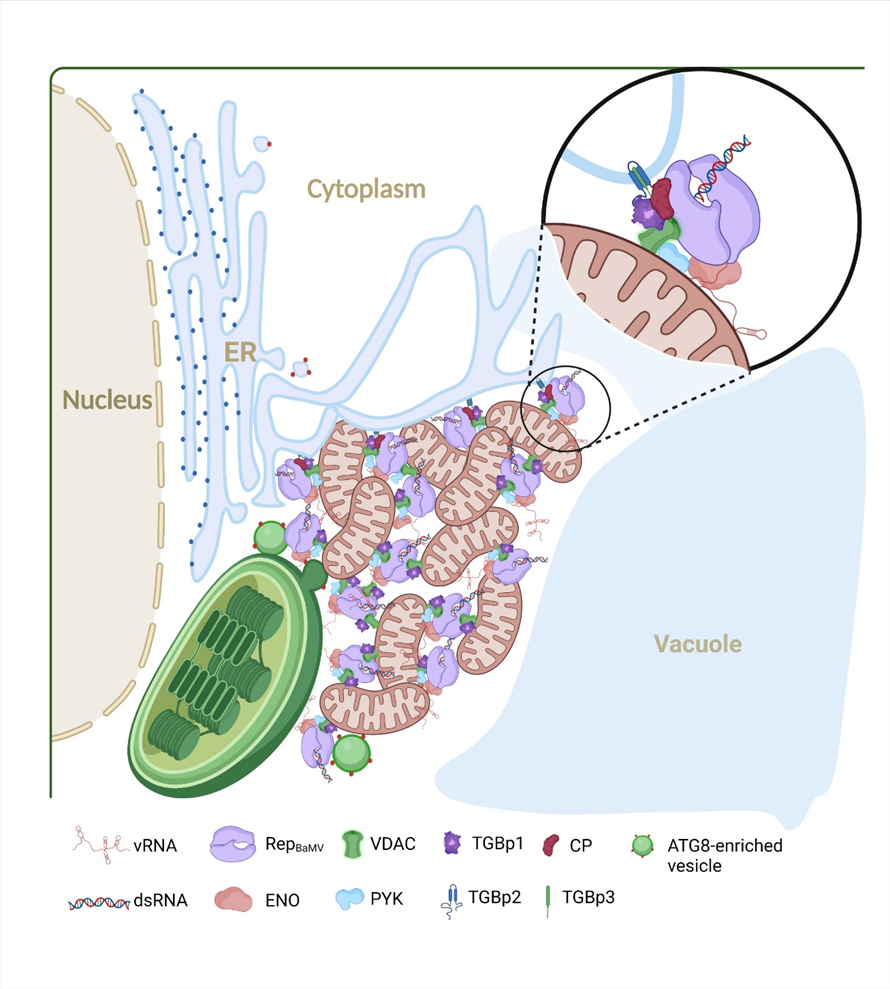[Na-Sheng Lin] Glycolytic enzyme enolase enhances Bamboo mosaic virus replication via its role in bridging chloroplasts and mitochondria
POST:Glycolytic enzyme enolase enhances Bamboo mosaic virus replication via its role in bridging chloroplasts and mitochondria
Positive-sense single-stranded RNA viruses ((+) ssRNA viruses) infect more than half of the world’s crops. Upon infecting host cells, they hijack host factors and exploit intracellular organelle membranes to assemble viral replication complexes (VRCs), which create a protective environment that facilitate efficient viral genome replication. Bamboo mosaic virus (BaMV), a (+) ssRNA virus, replicates and transcribes its subgenomic RNA in chloroplasts. however, it also relies on mitochondrial outer membrane protein voltage-dependent anion channel (VDAC) to form cytoplasmic VRC clusters essential for replication. The mechanism by which BaMV coordinates the use of two organelles for its replication remains totally unknown.
This study reveals the glycolytic enzyme enolase (ENO) plays a positive regulatory role in BaMV replication. ENO acts as a crucial linker between chloroplasts and mitochondria, thereby promoting the formation of cytoplasmic VRC clusters that ensure BaMV robust replication.
ENO not only binds to the untranslated regions of BaMV RNA but also interacts directly with the viral replicase (RepBaMV), facilitating viral replication and the formation and expansion of VRCs in the cytoplasm. The structural integrity of ENO is essential for these functions. Furthermore, ENO, along with pyruvate kinase, the mitochondrial outer membrane protein VDAC, and RepBaMV, forms VRC clusters localized on the endoplasmic reticulum membrane system. These clusters work in concert with the BaMV movement proteins to support stable viral replication and infection in plants. This study reveals that RNA viruses can simultaneously exploit multiple organelles for replication, opening up a new dimension in the field of virology.
This study was published on May 13, 2025, in the Proceedings of the National Academy of Sciences (PNAS) (https://doi.org/10.1073/pnas.2415089122). The research was carried out by Dr. Na-Sheng Lin’s laboratory at the Institute of Plant and Microbial Biology, Academia Sinica, with support from the Academia Sinica Investigator Project Grant. Dr. Kuan-Yu Lin, a postdoctoral researcher at the institute, is the first author of this study.
